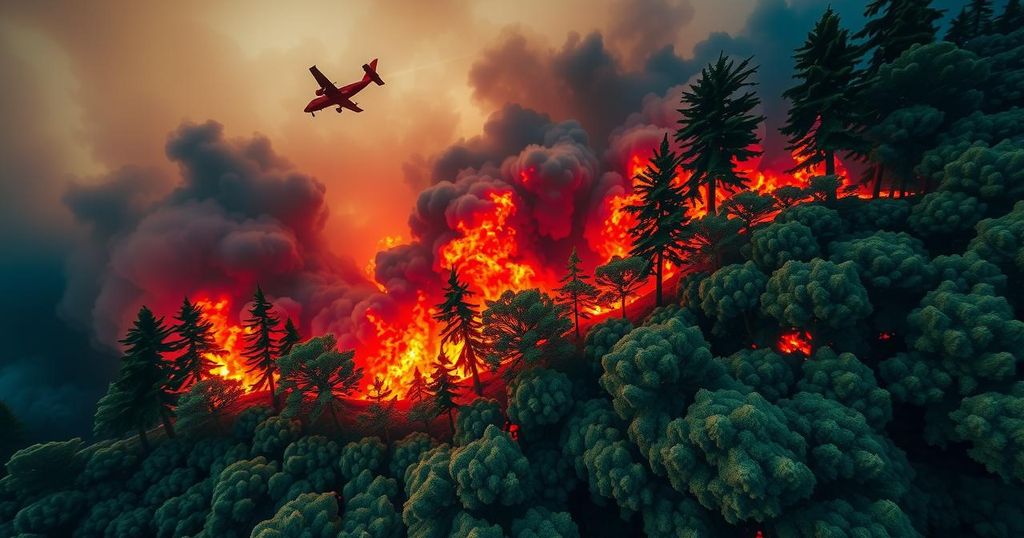Hurricane Helene Becomes the Deadliest Storm in Recent U.S. History with Over 200 Deaths
Hurricane Helene has resulted in over 215 confirmed deaths, making it the third-deadliest storm in the 21st century. The hurricane made landfall in Florida on September 26 as a Category 4 storm, causing unprecedented flooding in the Southeastern states, particularly in Florida and North Carolina. Rescue operations and public health concerns persist in the aftermath of the storm as thousands remain without power and clean water.
Hurricane Helene has emerged as one of the deadliest storms to strike the United States this century, with the death toll exceeding 215 as of Thursday, following the storm’s impact on Florida and the Southeastern states. Rescue operations are ongoing in the wake of the storm, which made landfall as a Category 4 hurricane on September 26, causing significant flooding across the region. This storm now ranks as the third-deadliest in the 21st century, trailing only Hurricane Katrina in 2005, which resulted in 1,392 fatalities, and Hurricane Maria in 2017, with at least 2,975 deaths. It is noteworthy that Hurricane Camille, which struck in 1969, remains the only hurricane deadlier than Helene in the past six decades. Most of Camille’s 259 U.S. deaths were attributed to flash flooding in the Appalachians, a concern echoed by climate experts regarding the aftermath of Helene. The severe weather events caused by Hurricane Helene resulted in catastrophic impacts across six states, where they faced unprecedented storm surge flooding, particularly in Tampa. The rainfall prior to the hurricane contributed to the severe flooding that was observed in regions like eastern Tennessee, western Virginia, and North Carolina. For instance, Asheville, North Carolina, recorded a staggering 13.98 inches of rain from September 25 to 27, leading to widespread flooding, infrastructure damage, power outages, and the displacement of numerous residents. As recovery efforts continue, health officials emphasize the risks that survivors face, including exposure to contaminated water and the subsequent growth of mold. One week post-landfall, thousands remain without electricity or access to clean drinking water as search and rescue operations proceed to locate the missing and assist those in distress.
Hurricane Helene has significantly impacted the U.S. Southeast, marking a severe event in an already challenging era of climate-related disasters. The storm’s trajectory, characterized as a Category 4 hurricane upon landfall, brought extreme flooding to multiple states, highlighting the ongoing vulnerabilities in disaster preparedness and response. This event aligns with a broader pattern of increasingly severe weather events attributed to changing climatic conditions. The magnitude of destruction and the resulting death toll underline the importance of effective rescue and recovery operations as communities grapple with the aftermath, seeking to rebuild and address public health concerns.
In summary, Hurricane Helene stands as a major natural disaster, with a confirmed death toll surpassing 215, marking it among the deadliest in contemporary history. The storm not only caused immediate fatalities but also initiated a crisis in public health and safety due to flooding, infrastructure damage, and the ongoing risks associated with contaminated water and mold growth. As recovery efforts continue, it is imperative that the affected communities receive the necessary support and resources to rebuild safely and effectively.
Original Source: www.axios.com




Post Comment